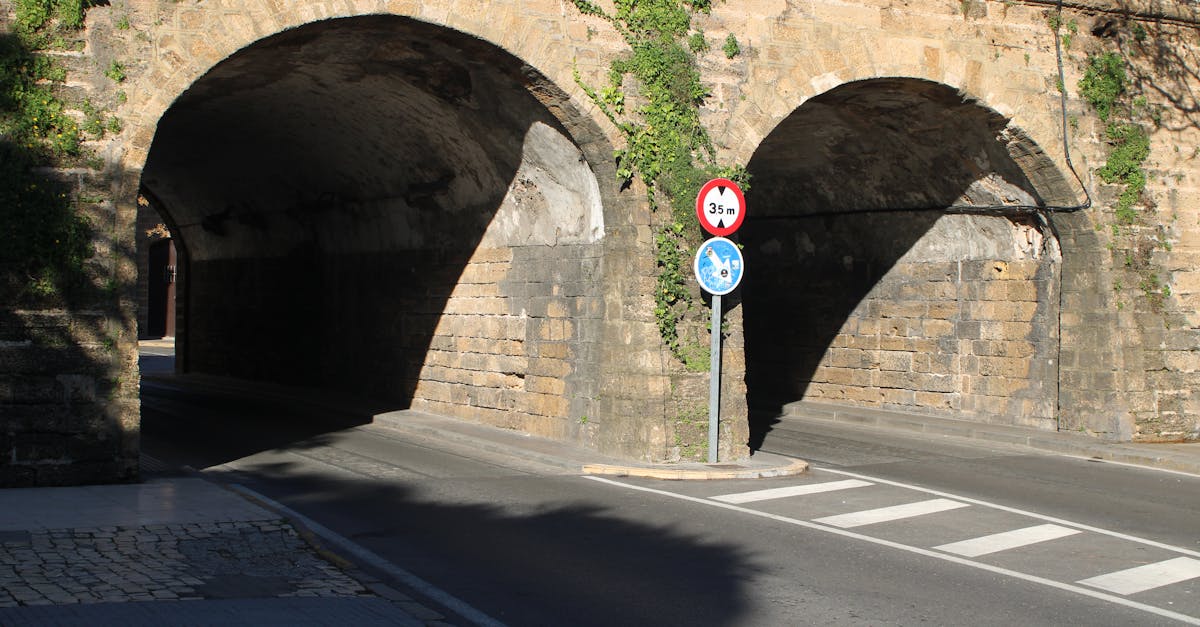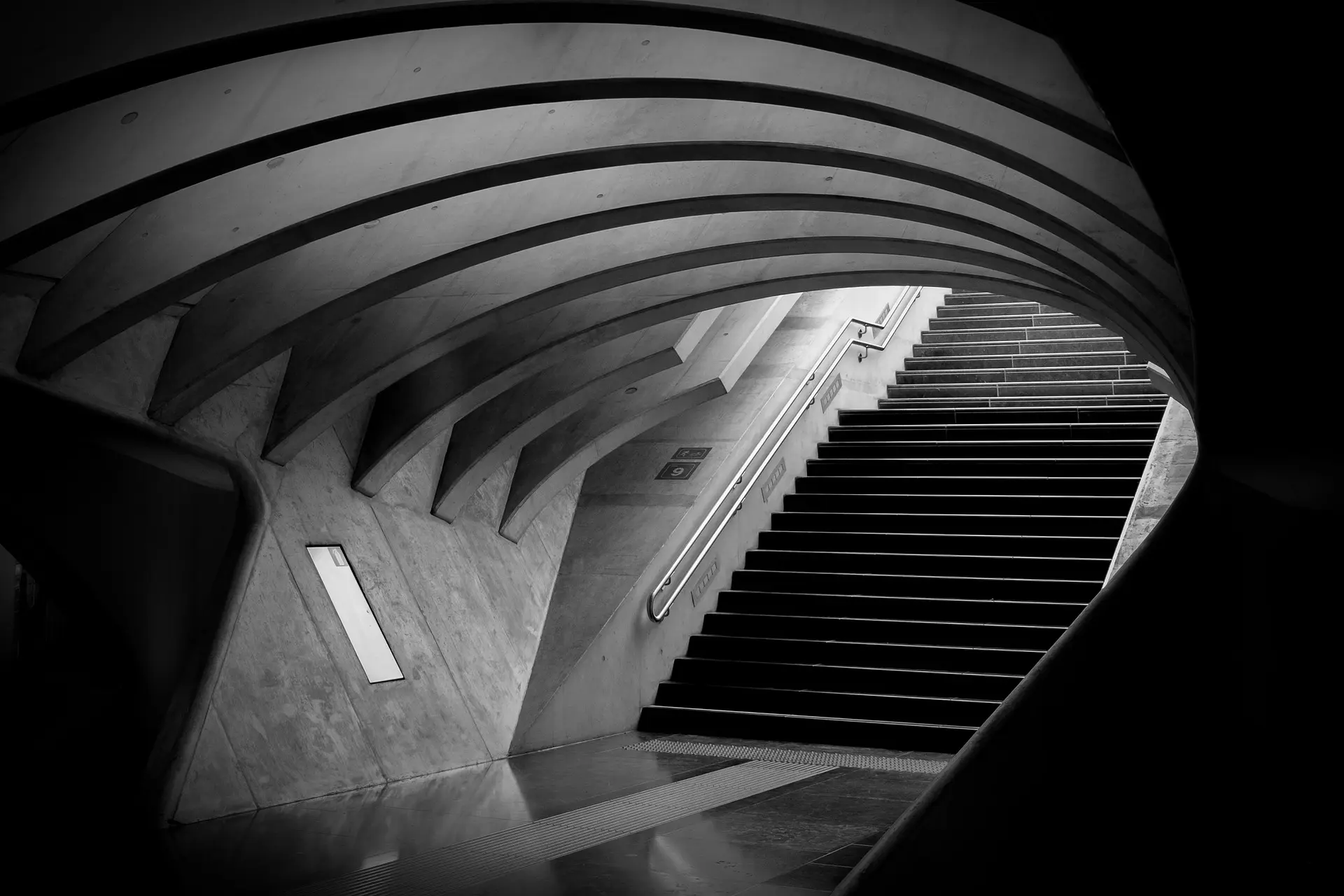Introducing Curvspace Tunnels
Curvspace Tunnels reimagine the design of traditional barrier spaces in urban environments. Curvspace Tunnels offers innovative solutions for urban transportation, infrastructure, and utility management. At Curvspace, we inspire you to transform underground pathways with cutting-edge tunneling technologies that ensure efficiency, sustainability, and cost-effectiveness. These tunnels seamlessly connect spaces, enhancing urban connectivity and reducing traffic congestion. Key features include a modular design for easy customization, eco-friendly construction to minimize environmental impact, and high durability using advanced materials. Applications range from transportation networks to utility corridors and emergency shelters. Tunnels can optimize space by freeing surface land for other developments, exemplifying modern engineering’s role in creating smarter, more resilient cities.
Reader Disclosure
Jump to:
What is a Tunnel?
A tunnel is an underground passage constructed for various purposes, typically to facilitate transportation, utilities, or water conveyance. Tunnels connect two points by creating a direct route beneath the surface, which can be mountains, urban centers, or waterways.
Three primary types of tunnels exist: transportation tunnels, utility tunnels, and water conveyance tunnels. Transportation tunnels, such as subways or road tunnels, enable efficient movement of people and vehicles within or between cities. Utility tunnels house infrastructure components like electrical cables, water pipes, or communication lines, serving critical urban functions. Water conveyance tunnels transport water for irrigation, hydroelectric power, or public supply, often traversing long distances and challenging terrains.
Constructing a tunnel involves several methods, chosen based on the geological conditions and purpose. Techniques like the cut-and-cover method, where a shallow trench is excavated then covered after tunnel construction, or the tunnel-boring machine (TBM) method, which utilizes large machines to progressively dig through the soil or rock, are commonly employed. In some scenarios, drill-and-blast techniques are used, especially in hard rock formations.
Historical examples highlight tunnels’ long-standing significance. The ancient Greeks and Romans built aqueduct tunnels to supply water to cities. The London Underground, inaugurated in 1863, demonstrates tunnels’ role in modern public transport. These structures not only solve logistical challenges but also symbolize engineering ingenuity and urban progress.
While tunnels serve utilitarian functions, they also evoke curiosity and admiration due to their hidden, often mysterious nature. Exploring tunnels unravels stories of human achievement and technological evolution, reinforcing their importance in shaping our interconnected world.
The History of Tunnels
Tunnels date back to ancient civilizations, serving as vital infrastructure for water supply, transportation, and defense. The earliest known tunnels, like those in ancient Mesopotamia around 2000 BCE, were built using basic tools yet achieved impressive lengths and complexity.
Ancient Innovations
Ancient Egyptians used tunnels for tomb construction in the Valley of the Kings. Romans advanced tunnel engineering with their aqueduct systems, exemplified by the Aqua Claudia, transporting water into Rome over 69 kilometers. These tunnels showcased the ability of ancient engineers to overcome natural obstacles, like hills and valleys, to provide essential resources.
Medieval Developments
Medieval Europe saw limited tunnel construction, primarily focused on mining operations. However, notable military tunnels like those used during the Siege of Orleans (1428–1429) demonstrated strategic uses, such as undermining fortifications.
Industrial Revolution
The Industrial Revolution marked significant tunneling advancements. The construction of the Thames Tunnel (1825-1843) by Marc Isambard Brunel and his son showcased innovative techniques, like the tunneling shield. This period also witnessed the creation of railway tunnels, exemplified by Box Tunnel on the Great Western Railway in England, 1.83 miles long and completed in 1841. These innovations facilitated rapid urbanization and industrial growth.
Modern Era
The modern era brought about technological breakthroughs in tunnel construction. The Channel Tunnel (1994), connecting the UK and France, is a remarkable feat, extending over 31.4 miles with 23.5 miles under the sea. Tunnel Boring Machines (TBMs) transformed construction, enabling efficient and safer excavation. Urban tunneling saw advances like New York City’s subway system, which began in 1904 and expanded to over 665 miles of track.
Contemporary Innovations
Contemporary tunnels incorporate sustainability and resilience. Tunnels prioritize eco-friendly materials and modular designs, addressing modern urban demands for efficient transportation, utility management, and emergency shelters. These tunnels represent not only human ingenuity but also a commitment to sustainable infrastructure development.
| Tunnel | Era | Length | Significance |
|---|---|---|---|
| Mesopotamian Tunnels | Ancient | Various | Early complex tunnel systems for water supply |
| Aqua Claudia | Roman Empire | 69 km |
Purpose of Tunnels
Tunnels serve various essential functions, facilitating efficient transportation and infrastructure. Primarily used for transportation, tunnels help create direct routes through mountains and under cities. For example, the Lincoln Tunnel in New York connects Manhattan and New Jersey, reducing travel time and congestion.
Tunnels also play a crucial role in water management. They channel water supply, control floods, and support irrigation systems. The Delaware Aqueduct supplies water to New York City, showcasing the importance of tunnels in urban water management.
Shelter and safety are other critical purposes of tunnels. They provide secure passage and protection during emergencies. During World War II, London’s Underground stations served as bomb shelters, demonstrating tunnels’ protective functions.
In urban planning, tunnels help with utility management and environmental protection. Underground passages house utility lines, reducing surface clutter and ensuring reliable services. The Common Utility Tunnel in Tokyo houses water, gas, and electric lines, highlighting the role of tunnels in modern infrastructure management.
Tunnels contribute to sustainable infrastructure development. By enabling efficient transportation, water management, and utility management, they help reduce environmental impact and enhance urban resilience. Modern tunnels incorporate green technologies, like LED lighting and energy-efficient ventilation systems, ensuring sustainability.
Overall, the diverse purposes of tunnels make them indispensable in modern urban environments. From transportation and water management to shelter and sustainability, tunnels exemplify human ingenuity in engineering and infrastructure development.
Types of Tunnels
Types of tunnels depend on their purpose, construction method, and location. Each tunnel type serves specific needs in various fields, contributing to infrastructure and urban development.
Transportation Tunnels
Transportation tunnels facilitate the movement of people and goods. Examples include rail tunnels, road tunnels, and metro tunnels. These tunnels improve commute times, reduce traffic congestion, and connect regions efficiently.
Utility Tunnels
Utility tunnels house essential services like water, gas, electricity, and telecommunications. By consolidating these services underground, urban areas can optimize space and enhance safety by reducing the need for surface utility lines.
Water Conveyance Tunnels
Water conveyance tunnels transport water for irrigation, municipal use, and hydroelectric power. Examples include aqueducts and drainage tunnels. They ensure reliable water supply to various regions, supporting agriculture and urban needs.
Mining Tunnels
Mining tunnels access mineral and resource deposits. These tunnels facilitate extraction processes, making the mining industry more efficient. They are critical for reaching deep-seated resources.
Pedestrian Tunnels
Pedestrian tunnels provide safe crossing under roads, railways, or other obstacles. They enhance urban mobility and safety, particularly in dense city environments. Examples include underpasses and connections between buildings.
Military Tunnels
Military tunnels serve strategic and protective purposes. They offer covert movement, storage of munitions, and shelter against attacks. These tunnels are essential for defense infrastructure.
Escape Tunnels
Escape tunnels offer evacuation routes during emergencies. Ensuring quick and secure exits, they are integral parts of disaster management plans.
Barrier Spaces Tunnels
Barrier spaces tunnels create separation zones for security or environmental control. Examples include tunnels in airports, border areas, and containment zones. These tunnels enhance safety and manage specific risks.
Each tunnel type uniquely contributes to infrastructure, offering specialized solutions for diverse challenges.

Contemporary Uses of Tunnels
Tunnels today span multiple industries and serve diverse functions, reflecting technological and engineering advancements.
Transportation
Transportation tunnels improve traffic flow and reduce travel time. Subways in major cities like New York and Shanghai provide efficient public transport options. Road tunnels, like Norway’s Laerdal Tunnel, aid in overcoming natural barriers.
Water Management
Water management tunnels secure supply and prevent flooding. New York City’s Water Tunnel No. 3 exemplifies this, providing millions with clean water. Stormwater tunnels prevent urban flooding by channeling excess water during heavy rains.
Utilities
Underground utility tunnels house essential services. These tunnels facilitate the installation and maintenance of electrical lines, communication cables, and gas pipelines. They minimize disruptions on the ground surface and add infrastructure resilience.
Mining
Mining tunnels are essential for resource extraction. Modern techniques like TBMs improve safety and efficiency. Examples of extensive mining operations include South Africa’s Mponeng Gold Mine and Australia’s Super Pit gold mine.
Pedestrian Mobility
Pedestrian tunnels enhance safety and urban mobility. Cities like Tokyo and London feature these tunnels to help pedestrians avoid road traffic. They often connect transport hubs, shopping centers, and office complexes.
Scientific Research
Tunnels also support scientific research. CERN’s Large Hadron Collider, located in a 17-mile-long tunnel beneath France and Switzerland, advances particle physics research.
Military Applications
Military tunnels provide strategic advantages. These tunnels serve purposes such as secure communication, troop movement, and storage in conflict zones.
Data Centers
Data center tunnels enhance security and operational efficiency. Tunnels enable underground data storage with stable temperatures and reduced risk from environmental factors.
The varied contemporary uses of tunnels showcase their significance in advancing infrastructure and technology across sectors.
Modern Trends in Tunnel Design
Emphasis on Sustainability
Sustainability drives modern tunnel design, incorporating eco-friendly materials and methods. Recycled concrete and steel reduce environmental impact. Designers integrate energy-efficient lighting, like LED systems, to minimize energy consumption. Water management strategies in tunnel construction ensure minimal disruption to natural watercourses.
Automation and Robotics
Technology advances have transformed tunnel construction. Tunnel Boring Machines (TBMs) automate digging, enhancing precision and safety. Robotics, including autonomous inspection vehicles, streamline maintenance. These machines reduce human risk and increase efficiency, leading to faster project completion times.
Advanced Safety Features
Modern tunnels prioritize safety through advanced systems. Integrated fire detection and suppression systems enhance fire safety. Emergency exits and ventilation systems ensure quick evacuation and optimal air quality. Structural health monitoring, using sensors embedded in the tunnel’s lining, provides real-time data on tunnel integrity.
Smart Tunnel Technology
Smart tunnels incorporate IoT and AI for enhanced management. Sensors collect data on traffic flow, environmental conditions, and structural health. AI analyzes this data to optimize tunnel operations, ensuring safety and efficiency. Smart lighting adjusts based on traffic volume, reducing energy use.
Multifunctional Use
Tunnels now serve multiple purposes beyond transportation. For example, the SMART Tunnel in Kuala Lumpur functions as both a motorway and a stormwater management system. This dual use maximizes space and resource efficiency, showcasing innovative approaches in modern tunnel design.
Cultural Diversity in Tunnel Design
European Tunnel Design
Tunnel design reflects the cultural identity of the regions they traverse. In Europe, for example, many tunnels feature ornate engineering that incorporates historical architectural elements. Designers often include arches and detailed facades to echo traditional European aesthetics.
East Asian Tunnel Design
In contrast, East Asian countries like Japan and China focus on minimalist and futuristic designs. These tunnels often incorporate advanced technology and sleek, modern materials, reflecting a forward-thinking approach. For instance, the Seikan Tunnel in Japan utilizes sophisticated earthquake-resistant engineering principles.
Middle Eastern Tunnel Design
Middle Eastern tunnel designs often integrate elements that highlight the region’s rich cultural heritage. Intricate tile work and artistic motifs can be found in various tunnel projects, echoing the historical significance of the region’s art and architecture.
Indigenous Influences in Tunnel Design
Indigenous practices influence tunnel design in various parts of the world. In Australia, some tunnel projects have incorporated Aboriginal art and cultural references, acknowledging the traditional landowners and adding a unique cultural dimension to the design.
Use of Local Materials
Using local materials also adds a layer of cultural relevance. In Scandinavian countries, for example, many tunnels use locally sourced stone, which helps them blend seamlessly into the natural landscape and reflects environmental sustainability practices prevalent in the region.
Color Choices in Tunnel Design
Color choices in tunnels also vary culturally. In Latin America, vibrant colors are frequently used to enliven tunnel interiors, providing a visually engaging experience that reflects the local culture’s lively spirit.
Such cultural diversity ensures that tunnels are not just functional structures but also significant cultural markers that enhance the sense of identity and place.
Curvspace Qualities of Tunnels
Curvspace tunnels transform urban landscapes through innovative designs. Their capacity to adapt to varying geotechnical conditions demonstrates a remarkable balance of structural integrity and flexibility. Unlike traditional linear tunnels, Curvspace tunnels provide inspiration motivation that increases stability under diverse load conditions by distributing pressure more evenly along their designing paths.
Enhanced Safety
Safety enhances the value of tunnels. So, designs reduce the number of potential weak points, minimizing the risk of collapse. In transport tunnels, for instance, this can be crucial for maintaining the structural integrity over long periods, reducing maintenance costs and improving overall safety.
Aesthetic Integration
Aesthetic integration forms a vital aspect of tunnels. These pathways allow for a more seamless blend with natural landscapes and urban environments. This aesthetic appeal makes them a preferred choice in cities where blending functionality with visual harmony is essential.
Efficient Use of Space
Space efficiency is another standout quality. Tunnels follow natural land contours, optimizing space usage and minimizing the need for extensive excavation. This approach benefits urban planners looking to maximize usable land in densely populated areas, ensuring a balance between development and preservation.
Advanced Engineering Techniques
Tunnels utilize advanced engineering techniques, employing cutting-edge materials and construction methods. For example, fiber-reinforced polymers enhance durability while reducing weight. Additionally, smart sensor technology integrated into tunnel structures allows real-time monitoring, ensuring early detection of issues and proactive maintenance.
Barrier Spaces Integration
Barrier spaces integration enhances the functionality of tunnels. These spaces serve as protective buffers, mitigating the risks associated with natural disasters like earthquakes. The design of the space not only provides physical protection but also supports quicker evacuation routes, thus ensuring public safety in emergencies.
Embracing Curvspace tunnel inspires designs that offer numerous benefits, combining aesthetic, safety, and practical advantages while paving the way for future urban development.
People Also Ask
What is the historical significance of tunnels?
Tunnels have been crucial for infrastructure since ancient times, enabling transportation, water supply, and mining. Modern innovations include the Channel Tunnel and Tunnel Boring Machines (TBMs).
How have tunnels evolved over time?
From basic hand-dug tunnels in ancient civilizations to today’s sophisticated TBM-constructed tunnels, tunnel technology has significantly advanced, exemplified by projects like the Channel Tunnel.
What are some contemporary trends in tunnel design?
Current trends focus on sustainability, automation, and incorporating cultural diversity into projects, ensuring safer and more efficient tunnel construction.
How do underwater tunnels differ from other tunnels?
Underwater tunnels require advanced engineering to withstand water pressure and ensure waterproofing, making them more complex than regular tunnels.
Why are tunnels important in urban areas?
Tunnels help alleviate urban traffic congestion and optimize land use, improving overall city infrastructure and quality of life.
Can you name some famous tunnels worldwide?
Notable tunnels include the Channel Tunnel between the UK and France, the Gotthard Base Tunnel in Switzerland, and the Seikan Tunnel in Japan.
What environmental impacts do tunnel constructions have?
Tunnel construction can impact local ecosystems, but modern methods aim to minimize disruption through sustainable practices.
What safety measures are implemented in modern tunnels?
Modern tunnels feature ventilation systems, fire suppression systems, emergency exits, and monitoring systems to ensure safety and resilience.
Conclusion
Tunnels have come a long way from their ancient origins to the marvels of modern engineering. With innovations like Curvspace Tunnels, we’re not just building pathways but crafting solutions that seamlessly blend safety, efficiency, and aesthetics. These advancements are essential for sustainable urban development, optimizing space, and protecting against natural disasters. As we continue to embrace these cutting-edge designs, we’re shaping a future where tunnels play a pivotal role in enhancing our urban landscapes while addressing the challenges of climate change and population growth. Safety remains a top priority, with sophisticated systems in place to ensure resilience and security.
Whether it’s the majestic Gotthard Base Tunnel or the indispensable Channel Tunnel, these structures exemplify human ingenuity and the relentless pursuit of progress. At Curvspace, we aim to inspire you to explore and embrace these modern advancements in tunnel design, focusing on sustainability, automation, and cultural integration.
Show & Tell
We’d love to hear your thoughts about these ideas! Simply click the link to head over to your favorite platform and add your comments about this post there. We’d like to know about your insights, questions, or just saying hi.
More Curvspace Topic Pages
Disclosure
Our content is reader-supported. This means if you click on some of our links, then we may earn a commission. Commissions do not affect our editor’s opinions or evaluations. Learn more about our editorial process.

About the Editorial Staff
The Curvspace editorial team comprises a diverse group of experts on intermediate and threshold spaces in homes and workplaces. Architects and interior designers, civil engineers and artists, environmental and behavioral psychologists, sociologists and anthropologists. All collaborate to create helpful content, that explores the full potential of these often-overlooked areas to enhance our daily lives.


